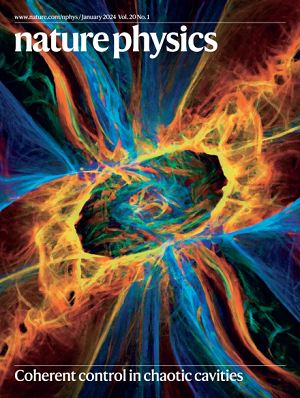细菌的第二信使具有非凡的信号能力
IF 17.6
1区 物理与天体物理
Q1 PHYSICS, MULTIDISCIPLINARY
引用次数: 0
摘要
第二信使是细胞内的信号分子,传递环境变化并促使细胞作出反应。通过信息论框架与定量实验相结合,铜绿假单胞菌中的第二信使分子cAMP被证明可以实现高达每小时40比特的信息传输速率。本文章由计算机程序翻译,如有差异,请以英文原文为准。

Bacterial second messengers achieve extraordinary signal capacity
Second messengers are intracellular signalling molecules that relay environmental changes and prompt cellular responses. Through an information-theory framework coupled with quantitative experiments, the second-messenger molecule cAMP, in the bacterium Pseudomonas aeruginosa, is shown to achieve information transmission rates of up to 40 bits per hour.
求助全文
通过发布文献求助,成功后即可免费获取论文全文。
去求助
来源期刊

Nature Physics
物理-物理:综合
CiteScore
30.40
自引率
2.00%
发文量
349
审稿时长
4-8 weeks
期刊介绍:
Nature Physics is dedicated to publishing top-tier original research in physics with a fair and rigorous review process. It provides high visibility and access to a broad readership, maintaining high standards in copy editing and production, ensuring rapid publication, and maintaining independence from academic societies and other vested interests.
The journal presents two main research paper formats: Letters and Articles. Alongside primary research, Nature Physics serves as a central source for valuable information within the physics community through Review Articles, News & Views, Research Highlights covering crucial developments across the physics literature, Commentaries, Book Reviews, and Correspondence.
 求助内容:
求助内容: 应助结果提醒方式:
应助结果提醒方式:


